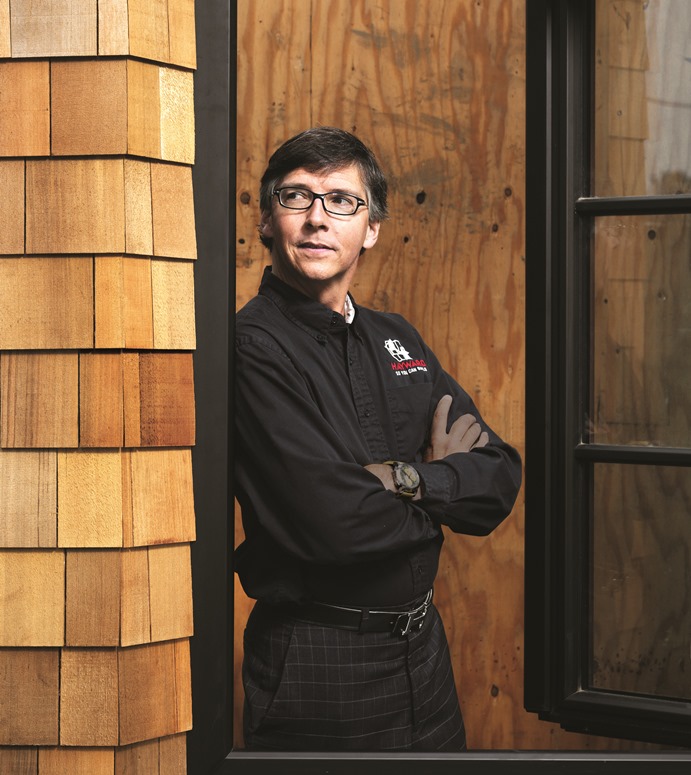Market Potential
With 230 million existing homes in the U.S.—two-thirds of them 25 years and older—there is a real challenge, and opportunity, for remodelers in updating these homes to provide healthy indoor air quality, says Larry Zarker, CEO of the Building Performance Institute, which sets standards for home performance professionals and provides credentialing for contractors through its programs.
Back in the 1980s and 1990s, builders learned how to keep moisture out of the house, which is a problem with many older homes, Zarker says. Now, he says, “we have the next phase, a tight envelope with a mechanical ventilation system. With older buildings, we say, ‘take your air from places you can trust.’” That most definitely is not an unsealed crawl space, where mold, insects, and bacteria can reside, mixing with air leaking into the house below stairs and rising up through the living spaces, where it can mingle with VOCs and household chemicals, creating a toxic stew that the home’s inhabitants breathe day in and day out.
The EPA estimates Americans spend 90% of their time indoors. Considering the poor air quality that prevails in so many existing homes, it is no wonder that asthma has reached epidemic proportions in the U.S., with more than 17 million Americans affected at a cost to society exceeding $14 billion per year. This inflammatory lung condition is also the leading chronic illness among children. More and more people are also reporting multiple chemical sensitivities to their physicians.
Health Concerns Drive Sales
When it comes to new homes, offering customers a healthier option is much more likely to fall on receptive ears than options for energy savings, says Zarker.
“Energy savings is not a driver [of sales]; people just don’t feel that’s worth the investment,” he says. “But if your daughter can’t play soccer in the fall because of her sinusitis, you’d do anything.”
A recent Farnsworth Group study of healthy home issues found that 66% of owners who expressed an intention to act on a healthy home project came to that decision because a household member developed symptoms.
“Builders and remodelers need to learn how to integrate these things into their practice, then it becomes second nature,” Zarker says.
That’s what Seattle remodeler Paul Kocharhook, president of Pathway Design & Construction, found. In a city where green is not a dirty word in the building industry, Kocharhook was looking for a way to make his company stand out from his competitors. In 2007, he played around with a few things affecting air quality in one of his spec homes, and that home received a lot of media attention. However, it wasn’t until he took a Master Home Environmentalist Course offered by the Seattle branch of the American Lung Association that he learned just how many toxins can affect IAQ.
“Each week I’d go home and start throwing things out of the house,” he says. “My wife thought I was crazy, but I’d say, ‘You don’t understand what’s in this stuff.’”
What he learned changed the direction of his company—a firm named to this year’s Big50, a designation for quality operations sponsored by ProSales’ sister publication, Remodeling.
“You can make a huge difference to someone’s family,” Kocharhook says. He saw that firsthand with a client referral, a husband and wife who both had chemical sensitivities, the wife’s so severe that she was constantly in and out of the hospital. By adequately sealing their house against the water intrusion that was feeding the growth of mold and using non-toxic materials building materials and finishes, Kocharhook delivered a product that restored the homeowners’ health.
While Kocharhook acknowledges most of his clients are not looking for a healthy home, he says, “Once we have that conversation, they say, ‘Yeah, we should do that.’”
One of Kocharhook’s biggest problems lies in obtaining the specialty products he needs, like plywood that uses soy-based adhesives instead of the typical formaldehyde-based resins. There’s only one place he can get that product locally, and that’s in Tacoma, 30 miles south of Seattle.
Problems aside, specializing in healthy homes has given Kocharhook an edge in his competitive market, and it’s only a matter of time before more and more builders and remodelers begin mining this fertile territory.
If dealers don’t want to be caught napping at the tipping point of opportunity, they should at least talk to their customers and investigate the possibilities of integrating healthy home products into their inventory. It may well be to their profit.

